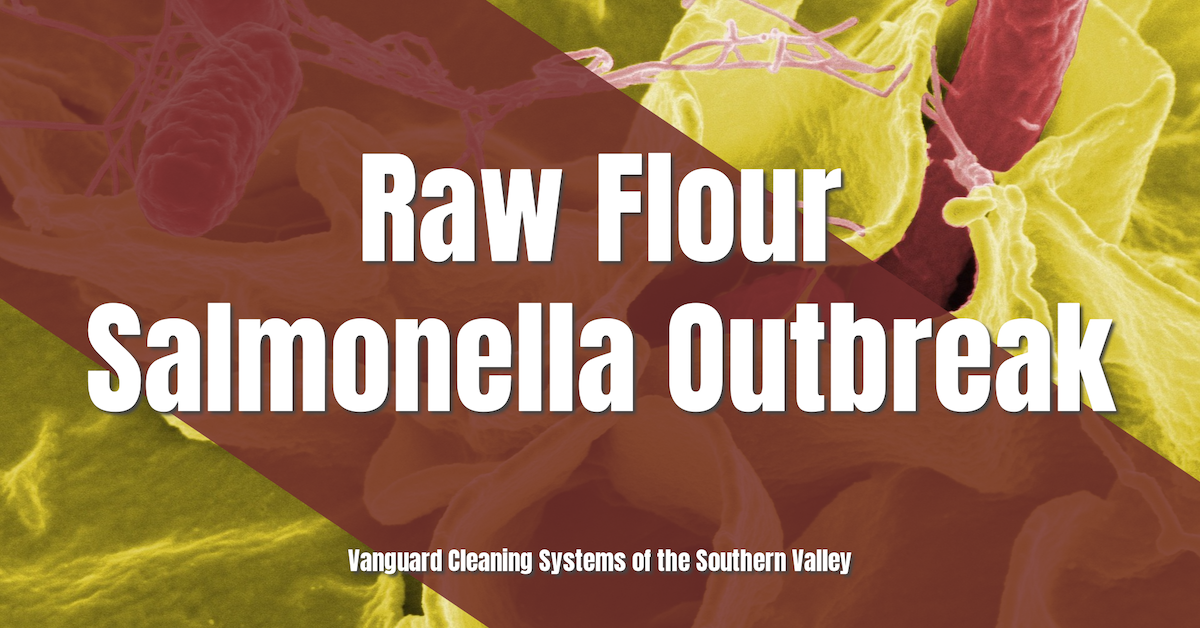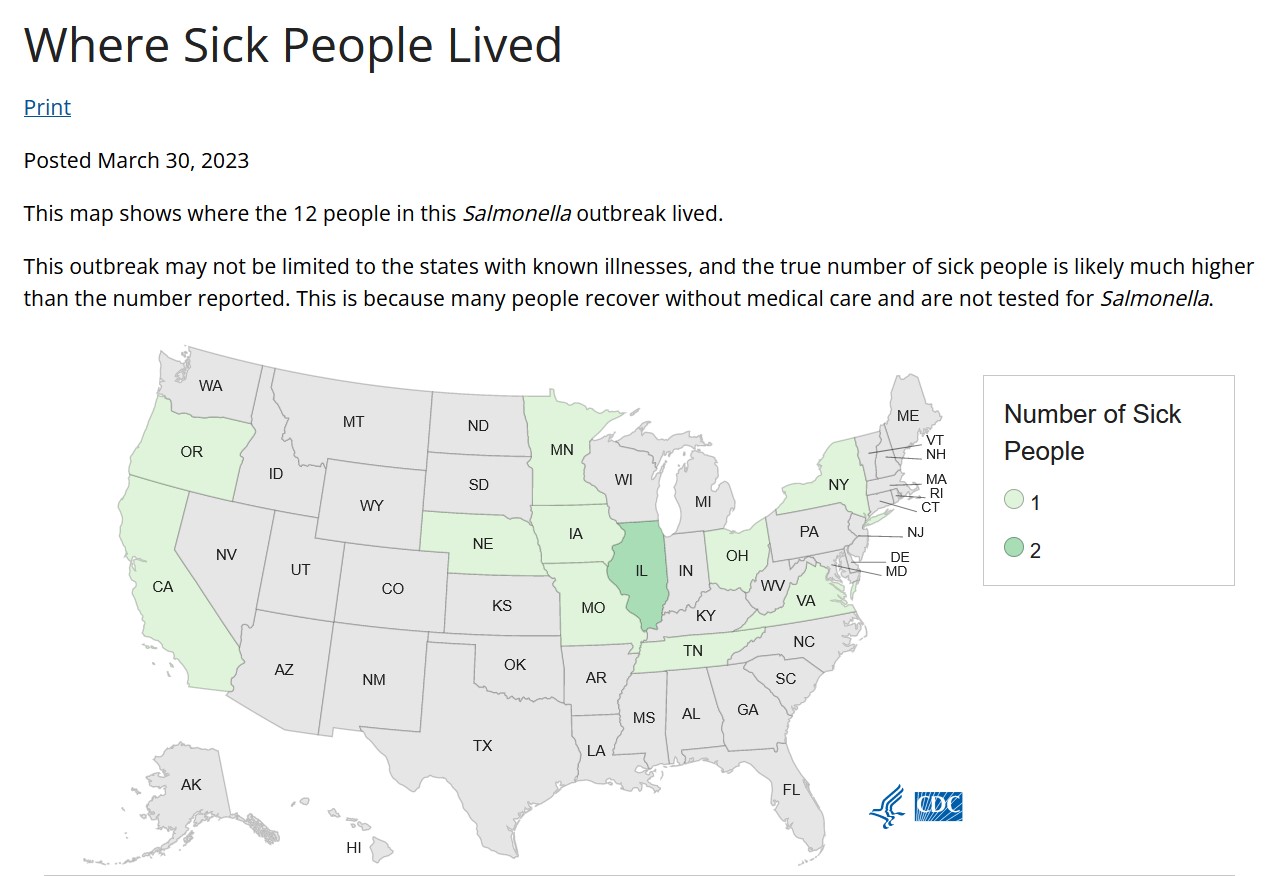Raw flour is the source of a recent Salmonella Infantis outbreak, and while a specific brand of flour has not been identified, most patients reported consuming raw dough or batter made with flour before falling ill.

Recent Salmonella Outbreak Linked to Raw Flour
Federal officials have confirmed that raw flour is the source of a recent Salmonella Infantis outbreak that has resulted in illness across 11 US states, with three hospitalizations.
While a specific brand of flour has not been identified, most patients had reported consuming raw dough or batter made with flour before falling ill.
The patients, aged 12 to 81 years old, are spread across the country, indicating that a nationally distributed product is responsible.
According to the CDC, many more cases are likely to exist.
This outbreak may not be limited to the states with known illnesses, and the true number of sick people is likely much higher than the number reported.
This is because many people recover without medical care and are not tested for Salmonella.

How Did Salmonella Get in the Flour?
Salmonella can find its way into flour when animal poop ends up in fields where the grains that become flour are grown or when contaminated irrigation water is used.
Raw grains are not treated to kill off bacteria during processing, so Salmonella and other bacteria can end up in flour, often resulting in widespread illness.
Determining the exact cause of contamination can be challenging since it can occur during various processing stages or in the field.
If there are poor infection prevention standards at the factory producing a particular brand of flour, thousands of batches could become contaminated with bacteria before the problem is discovered.
Once contaminated with Salmonella, the flour will remain contaminated as the bacteria can survive in a dry environment--sometimes for days, depending on the variant.
According to Prevention;
The way Salmonella can find its way into flour is admittedly gross.
Salmonella is found in animal intestines.
Food becomes contaminated when it comes into contact with feces—directly in the fields or even through contaminated irrigation water.
Meaning, animal poop ends up in fields where grain that becomes flour is grown or can get into the water that helps the plants flourish.
When raw grains are processed into flour, there is no step to potentially kill off bacteria that could be in those grains.
As a result, Salmonella and other bacteria like E.coli can end up in your flour and make you sick.
Salmonella Outbreak Linked to Flour, CDC Warns—Experts Explain How to Stay Safe
Combatting Salmonella Outbreaks in Facilities
Several scientifically verified methods exist for eliminating Salmonella in public facilities, depending on the specific environment and situation.
The most common method is to use disinfectants effective against Salmonella, such as chlorine bleach or hydrogen peroxide.
These disinfectants can be applied to surfaces or equipment contaminated with Salmonella and are often used in healthcare facilities, food processing plants, and other public settings.
Another method is to use heat to kill Salmonella.
For example, high-temperature steam cleaning can sanitize surfaces or contaminated equipment.
In addition, cooking food to the proper temperature can kill Salmonella and other harmful bacteria.
Finally, good hygiene practices, such as frequent handwashing and cleaning and sanitizing surfaces, can help prevent the spread of Salmonella in public facilities.
References & Resources
- FDA, and CDC say flour is the source of the Salmonella outbreak; brands not known yet
- Salmonella Outbreak Linked to Flour
- CDC investigates salmonella outbreak linked to flour
Takeaway
A recent Salmonella Infantis outbreak has been linked to raw flour, resulting in illness across 11 US states, with three hospitalizations.
While a specific brand of flour has not been identified, most patients had reported consuming raw dough or batter made with flour before falling ill.
As a business owner, it is essential to be aware of these risks and to implement enhanced cleaning and disinfection strategies in your facilities.
This includes using targeted disinfection and enhanced cleaning strategies.
Onboarding and managing the requisite labor and material resources necessary to ensure the highest standards of cleanliness are achieved and maintained may prove cost-prohibitive for many organizations.
Outsourcing is a proven method for onboarding highly in-demand cleaning and disinfection services and experience for a fraction of the price of maintaining a similar service in-house.
If you would like more information regarding the effectiveness of high-performance infection prevention and control measures, or if you would like to schedule a free, no-obligation on-site assessment of your facility's custodial needs, contact us today for a free quote!
In Bakersfield, CA, call (661) 437-3253
In Fresno, CA, call (559) 206-1059
In Valencia, CA, or Santa Clarita, CA, call (661) 437-3253
In Palmdale, CA, or Lancaster, CA, call (661) 371-4756


You must be logged in to post a comment.